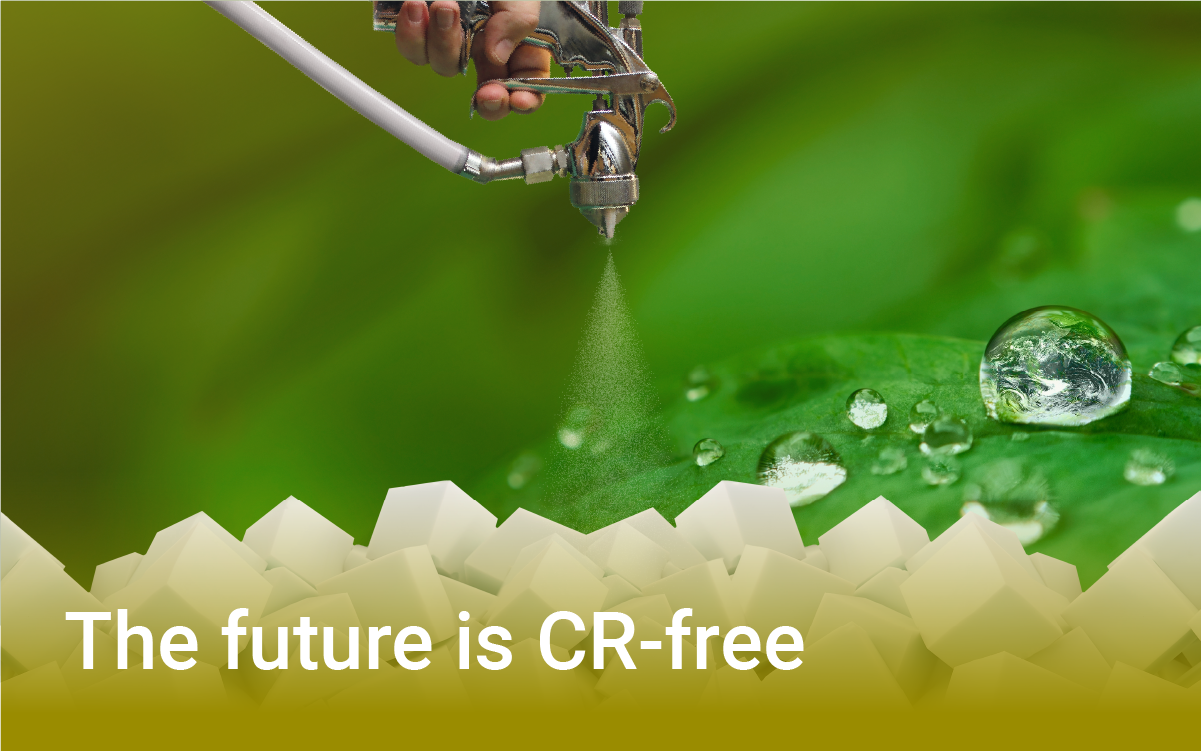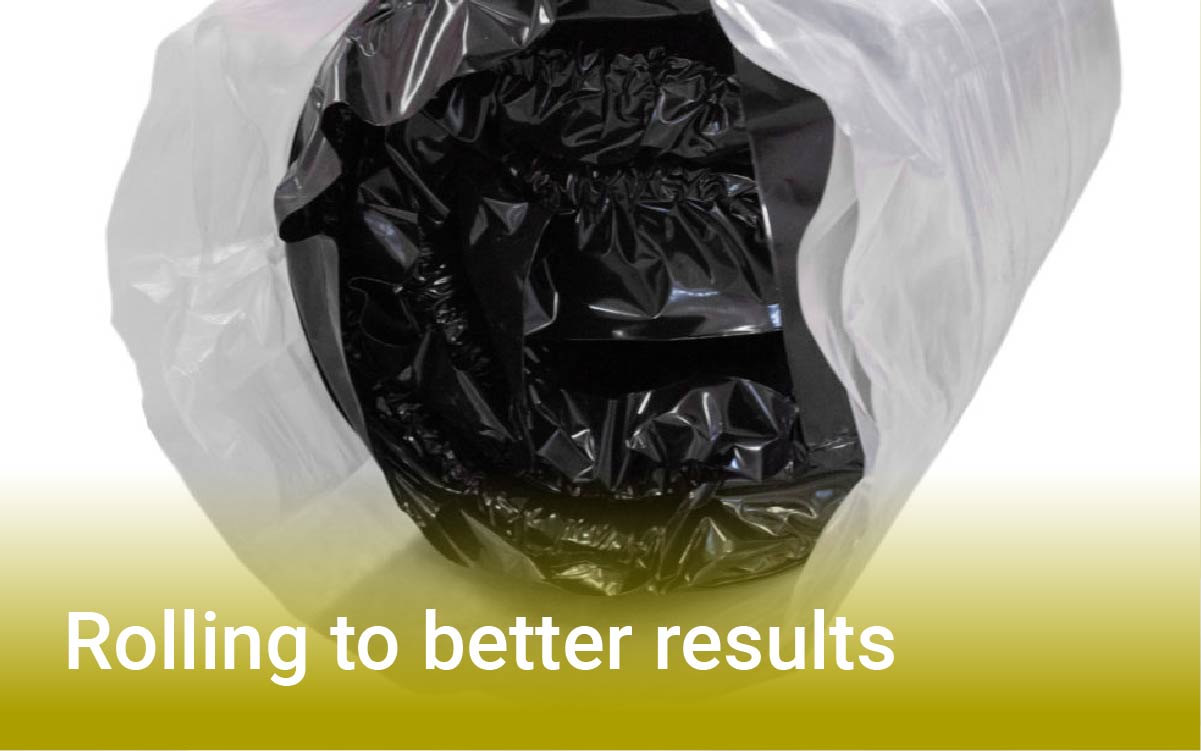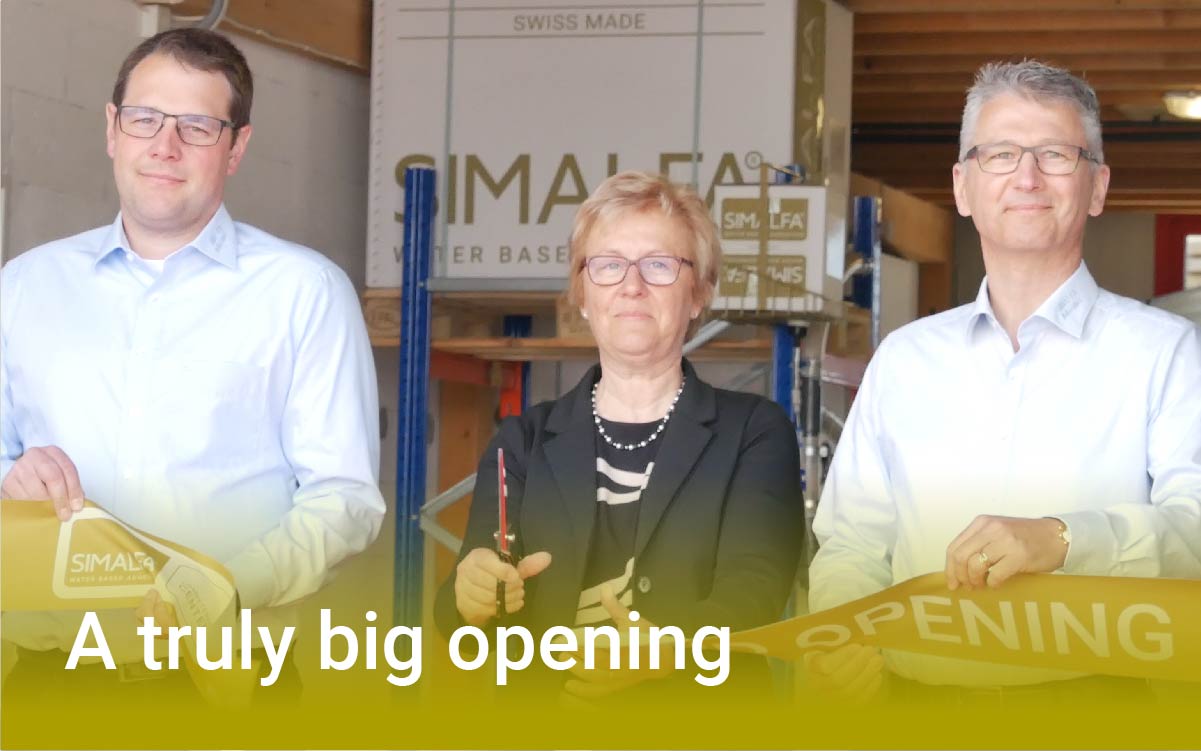How rolled mattresses optimize the logistics
of your products
The size and weight of mattresses is a challenge during production, storage, and especially delivery. With special packing methods, it is possible to ship mattresses conveniently and inexpensively in rolled form. The compressing and rolling also saves packaging material such as plastic foil. To start producing rolled mattresses successfully, some considerations need to be made first. It starts with choosing the suitable raw materials, continues with the gluing process, and ends with the right kind of rolled packaging.
Suitable materials for roll packing
It is possible to roll mattresses out of different materials. The most common choice is foam mattresses such as PU foam. Foam is easy to roll because of its flexibility and softness. To guarantee a problem-free return to the original form after unpacking, the density of the foam should be at least 25kg/cubic meter. Foam mattresses can be compressed to up to a fourth of their original size and still stay flexible and return to their original, flat shape after unrolling.
Latex mattresses can be rolled as well, but this material is more sensitive than PU foam and can only be pressed up to a third of the original height. Storage duration and temperature are more crucial with this material and depend on the sort of latex that was used. The biggest challenge is high temperatures during shipping because they can prevent the latex from unrolling completely. The rolling of spring core mattresses is possible too, but only when vacuumed flat and rolled afterwards. If rolled unpressed, the springs could hook into each other and the mattress would get damaged.
Rollable adhesives without memory effect
Roll packing is used in the production of mattresses and especially beneficial in inline productions because of its efficiency. After gluing, the mattresses are packed immediately, which requires special adhesives.
One excellent option to manufacture a mattress in less than a minute is to force dry the glue – e.g., SIMALFA® 360. This specifically designed adhesive is characterized by its strong instant tack, fast-drying behaviour, and high flexibility when completely dry. After the one-sided application, the glue is force dried in a heating tunnel. Afterwards, the tack reaches its peak and the workpieces can be joined. Because the adhesive is already dry at this point, the mattress can be roll packed immediately after pressing.
The glue has been specifically designed to not stay in its rolled shape and enable the mattress to return to an entirely flat form after being unrolled.
As an alternative to the forced drying process, the mattresses can be produced with the naturally drying SIMALFA® 3031. This adhesive can be applied with a double roller. Due to the small application quantity required and the glue’s unique formulation, it dries very fast, meaning the end product can be packed shortly after gluing. This adhesive is applied either with a double roller or with a spray gun.
Both adhesives (SIMALFA® 360 and SIMALFA® 3031) offer a long-lasting and strong bond. This is an important quality for rolled mattresses because the stress on the glue is much higher than with flat-packed mattresses. Additionally, all our adhesives are by nature more eco-friendly than solvent-based adhesives because of their water base. Our adhesives are odorless which is beneficial for roll packing because the scent of the materials remains intact in the airtight bag and could disturb the customer.
How to roll and pack
To roll pack the mattress, several procedures are possible. Inline productions often include a packaging machine at the end. Normally, the mattress is pressed, vacuumed, and packed into an airtight foil while flat. Afterwards, it is rolled, put into a bag, and tightly closed. Because the inner foil is not airtight over a long period, the vacuum slowly fades. But due to the outer bag, the mattress keeps its shape. The benefits of this option are its simplicity, the small tension on the glue because of the flat vacuuming, and especially the suitability for spring core mattresses.
A disadvantage is the big amount of plastic used if the inner foil and outer bag are both made of plastic. But there are already alternatives such as bags made of strong paper or textile materials. These materials are more challenging because they are not naturally water resistant, but they are much more eco-friendly. The paper bags can even be disposed of with wastepaper. The second option is roll packing the mattress without vacuuming it first. The mattress is rolled and pressed into the same roller drum. In the end, the mattress is pushed out of the machine sidewards and into a closed plastic bag that is airtight. This option is very simple and requires the least amount of packaging material. Both procedures are automatic and therefore more efficient than manual packing of unrolled mattresses.
Afterwards, the transport of rolled mattresses to the delivery van is easier than with flat and therefore bigger mattresses. They use less space while being stored and more mattresses can be delivered in one van, which promotes sustainable shipping practises.
A benefit for customers, too
The customers benefit from the possibility to easily transport their new mattresses as well. After unrolling, the mattresses are ready to use after a short time. Although the mattress is in an airtight bag, it will emerge without any bad odours because SIMALFA® products are scentless.
They are also tested for harmful substances, so the unrolling can be done without worries. With the proper material and our SIMALFA® adhesives, the quality of the mattresses remains as high as if they had never been rolled.
Secure your personal appointment
Do you need support or advice? We love to share our know-how. Schedule your appointment now!
Read more articles
CR-free adhesives
In the past, supply shortages have increased due to the limited availability of CR. The SIMALFA®-team has therefore expanded its adhesive portfolio with CR-free adhesives that meet current and emerging regulations.
How rolled mattresses optimize your production
Long drying times, high space requirements and the so-called "memory effect" are a thing of a past. SIMALFA® 360 is the first choice for an efficient mattress production.
SIMALFA® Competence Center
SIMALFA® adhesives can be applied manually or automatically - both with spray guns or roller coaters. Find the right application method for your production.




